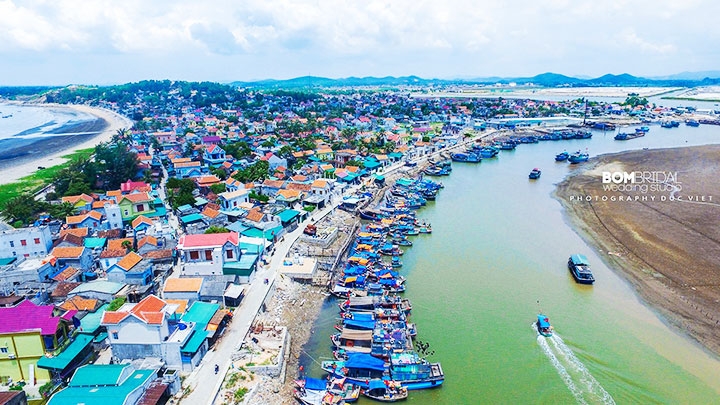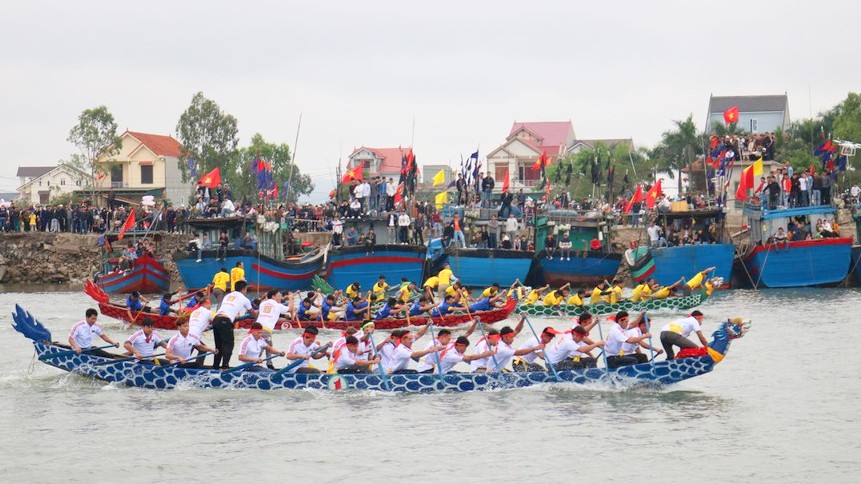In a coastal fishing village known locally as Ke Can, in Quynh Phuong Ward, Hoang Mai Town, in the central province of Nghe An, the celebrations for Tet (Lunar New Year) festival of the locals are quite different from other regions.

A corner of Quynh Phuong Ward (Photo: Duc Viet)
Villagers often pay grave-visiting trips on the last day of the lunar year. They flock to the cemeteries clean up and burn incense for their ancestors’ graves, and inviting them to join their families’ Tet celebrations.
They then head home to prepare a tray of offerings for ancestors as a tradition of all Vietnamese families on the last day of the year.
Local fishermen also prepare another tray of offering on the boats, which are previously cleaned up with aromatic water and decorated. The boats’ owners burn incense to thank the god of the sea for blessing them with prosperity, and pray for a new year with favourable weather condition and bumper catches.
While people in other regions may avoid having squid on the first day of the lunar new year because its ink is black – an unlucky colour, it is a favourite dish of Ke Can villagers during Tet. They often welcome guests to their houses during Tet with sea food such as shrimp, fish and squid, of which a pot of salty steamed fishes being indispensable.
A specialty in Ke Can is a roll comprising dried small-sized shrimp, which is cooked with cooking oil and molasses, sliced and fried pork, rice noodle, paper-thin sliced fried eggs, herbs such as coriander, star fruit, and green onions.
All of the ingredients are folded and wrapped together, and a slice of a roll is a picture of colour with the red shrimp, yellow fried egg, and green vegetables. The roll is dipped into homemade fish sauce, which is added with lemon, garlic, and chilli.

.Fierce competition among teams at the boat race on Mai Giang River (Photo: baonghean.vn)
The morning of the second day of lunar new year is the most anticipated time for many villagers, when the boat race on Hoang Mai River takes place within the framework of Con Temple Festival.
Since the middle of the first lunar month, participating teams start their practice on the river for the race.
On the competition day, the river is bustle with rowers and cheerers from 5 am. The 11 teams receive enthusiastic cheers from the festival goers and drummers.
For local people in Ke Can, a Tet festival without boat racing is not a complete Tet.
Their Tet celebrations run until the seventh day, or even the fifteenth day of the first lunar month. They then joyfully participate in the village’s traditional festival from the 19th to the 21st day of the month.
The festivals provide an opportunity for villagers and family members to gather together to celebrate the holiday spirit and enjoy the salty odour of the sea.